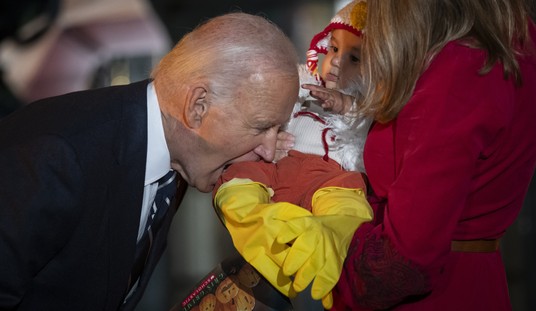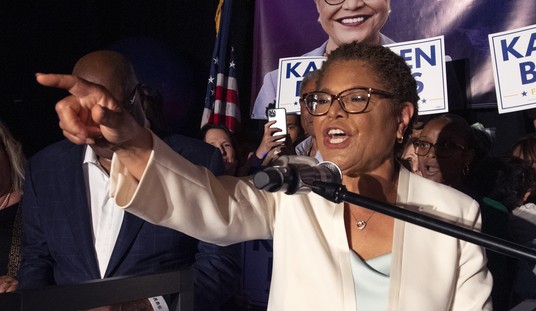By Matt A. Mayer (@ohiomatt), CEO of Opportunity Ohio. A one-page graphic on this op-ed can be found at www.opportunityohio.org.
Because politicians add fluff to their records, it is important to compare the factual records of the conservatives running for president in 2016. As the U.S. Senate and business candidates lack hard metrics upon which to judge their records, I focused on the eight conservative governors in the race. The metrics selected are the elements critical to getting America back on its feet.
First, with prosperity so closely tied to having a good job and growing economy, the health of the private sector means a great deal to most Americans. That means strong private sector job growth and an expanding gross domestic product (GDP) are paramount to escaping the last six and a half years of sluggish economic growth.

Using data from the U.S. Bureau of Labor Statistics, I used the average annual percentage net growth in the private sector from each candidate’s first month office to the last month (end of tenure or most recent month for current governors). For the GDP, I took data from the U.S. Bureau of Economic Analysis and compared the average annual GDP growth for each candidate’s first year in office to his last year or 2013 for current office holders, as that is the last year of available data.

Equally important is a proven ability to keep government spending in check. With the explosion in federal spending and debt over the last decade, America needs a strong hand on the checkbook, especially as an aging population puts more strains on entitlement spending. Using data from the National Association of State Budget Officers and their members, I compared the annual average percentage change in state general fund spending from their second year in office to their last or most recent passed budgets for current governors.

Finally, the best measure of these candidates is reflected in the common sense measure of how Americans “vote with their feet.” A growing population is a strong signal of economic opportunity and pro-prosperity policies. I looked at the average annual net percentage change from their first years in office to their last or 2014 for current governors.

For all four categories, using the annual averages allowed me to compare the eight governors regardless of the length of their tenure. I wanted to include tax burden rankings and per capita income growth, but the data just isn’t available for current governors to make a fair comparison.
It should be noted that Rick Perry’s record reflects surviving two recessions, with Mike Huckabee, Jeb Bush, and George Pataki enduring the 2001 recession and Bobby Jindal coming into office right before the 2009 crash. In contrast, Chris Christie, John Kasich, and Scott Walker all entered office during the third longest recovery since 1929. Even though it has been an anemic recovery, they haven’t had their records negatively impacted by an economic downturn.
So, how do the eight candidates stack up? Perry and Bush clearly have the strongest records, coming in first, second or third in three out of four categories. Huckabee and Walker tied for third, with Pataki and Kasich tied for the weakest record among the eight candidates.

On job growth, Bush’s 2.6% average is 0.6% more than Kasich’s 1.9%, which is the largest gap between candidates. To put that gap in perspective, Bush in eight years and one recession added nearly 1.2 million private sector jobs (a 20.4% increase), as Kasich in 4.25 years has added just 347,000 jobs—the 24th best among governors since he took office. Perry’s 1.75% average also is impressive given he achieved it through two recessions. It isn’t coincidental that Bush and Perry also had the top GDP and population growth figures. People flocked to Florida and Texas during their tenures due to the booming economies and job opportunities.
On spending, Jindal and Christie claim the top spots, likely due to the former positively impacted by the tapering off of Hurricane Katrina spending and the latter due to facing a democratic-controlled legislature. Though he can cite the massive influx of people needing more infrastructure and government services, Bush’s spending far outstripped Perry who faced a similar population boom. Ironically, Kasich, who is running based on his role in balancing the federal budget as a congressman, hasn’t shown similar fiscal restraint as governor, especially given his expansion of Medicaid under Obamacare.
At the end of the day, records may not determine who wins the Republican nomination. The 2016 election, however, will be a contrast election with Barack Obama. Given his non-existent pre-presidential and weak presidential records, I wouldn’t bet against the Republicans with the strongest records who can communicate why those records matters to Main Street Americans. That puts Perry, Bush, Walker, and Huckabee in the driver’s seat, with Jindal, Christie, Pataki, and Kasich sitting in the back seat hoping for lightning to strike.













Join the conversation as a VIP Member